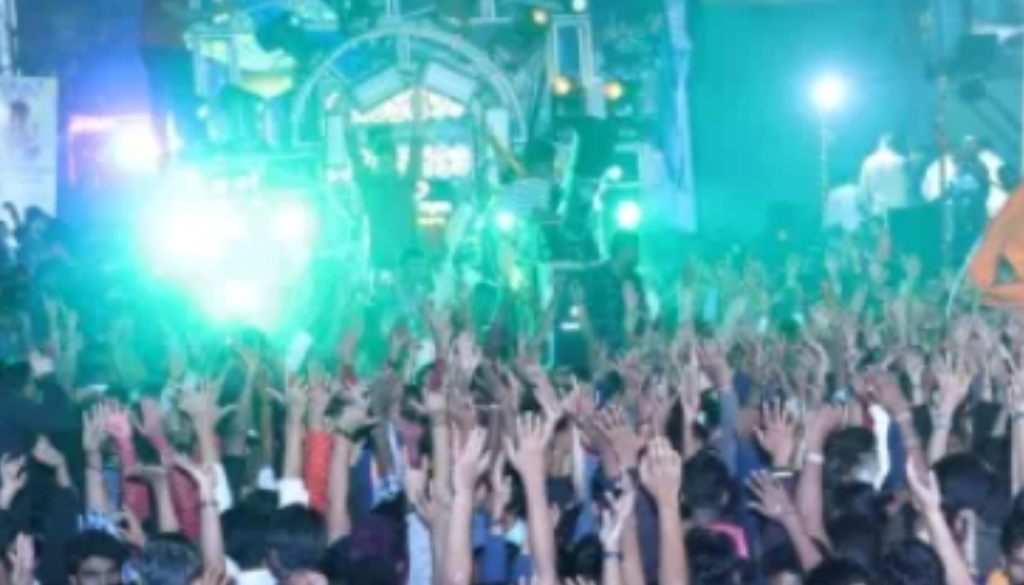Reported by Varad Bhatkhande
Pune, 18th September 2024: Despite numerous appeals and directives to prevent noise pollution during yesterday’s Ganesh Visarjan (Immersion) Procession in Pune, the advised decibel limits were exceeded. Although the average sound level decreased compared to last year, it still reached 94.8 decibels, surpassing all noise pollution limits. The highest sound level of 118 decibels was recorded in Belbag Chowk and Holkar Chowk.
Volunteer students from the College of Engineering Pune (COEP) Technological University conducted scientific sound level measurements every four hours at ten major squares on Laxmi Road yesterday and today. Analysis of these records revealed the extent of noise pollution.
According to regulations, noise levels in industrial areas are expected to be 75 decibels during the day and 70 decibels at night, in commercial areas 65 decibels during the day and 55 decibels at night, in residential areas 55 decibels during the day and 45 decibels at night, and in peaceful areas 50 decibels during the day and 40 decibels at night. However, statistics indicate that these noise limits were not adhered to.
An average noise level of 94.8 decibels was recorded this year, primarily due to traditional instruments like sound recorders and drums. While the average noise level has decreased compared to last year, it still exceeds the standard limits. In recent years, there has been a growing awareness among activists and devotees about noise pollution. As a result, Ganesh Mandal workers and the police assisted in sound-level recording efforts.
Until last night, the police and administration permitted a limited number of sounding instruments, resulting in traditional musical instruments dominating Laxmi Road.
The average decibel levels for the ten squares were as follows:
– Belbag Chowk: 99.8
– Ganpati Chowk: 95.8
– Limbaraj Chowk: 98.1
– Kunte Chowk: 94.9
– Umbarya Chowk: 92.2
– Gokhale Chowk: 93.5
– Shedge Vithoba Chowk: 92.8
– Holkar Chowk: 94.0
– Tilak Chowk: 96.7
– Khandoji Baba Chowk: 90.2
The average decibel count was 94.2. The lowest decibel count was recorded at 4 AM today at Khandoji Baba Chowk, with a level of 50.1. In contrast, the highest decibel levels were measured yesterday at noon in Belbag Chowk and Holkar Chowk.
Professor Mahesh Shindikar of the COEP Technological University stated, “Noise began as early as 8 AM yesterday. Over the past few years, there has been increasing awareness among activists and devotees about noise pollution, along with a growing interest in the process of measuring sound levels. Ganesh Mandal workers and the police actively participated in these efforts.
The study was conducted under the guidance of Professor Mahesh Shindikar, with planning by Ira Kulkarni and Mehar Raghatate. The volunteer team included Mrunal Khutemate, Ishita Humnabadkar, Ayush Lohakare, Aditya Falke, Aditya Sanjeevi, Tejas Joshi, Mohit Kandalkar, Ruturaj Malode, Shreya Shinde, Vasundhara Janawade, Prem Dupargude, Kshitija Metkari, Abhiraj Vaidya, Shruti Kulkarni, Shreya Karande, Saurish Dange, Vaibhav Bhargal, Vedant Gondhalekar, Soham Bingewar, Ashish Dhage.
How Noise Levels Are Measured
Decibel levels are measured using a spatio-temporal and scientific approach. Spatio-temporal analysis, which considers both spatial and temporal factors, helps identify noise hotspots and track changes in sound intensity over time. The study involved monitoring noise levels for 24 hours at ten chowks on Lakshmi Road. These observations are solely for research, awareness, and study purposes. The records are not based on any specific sound source but rather on the sounds perceived by a common person standing in the square during the procession.
